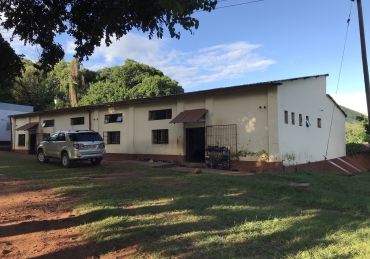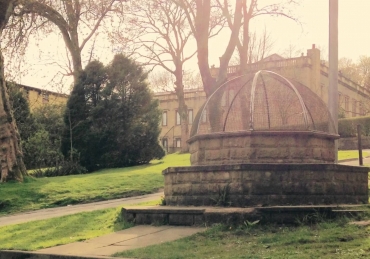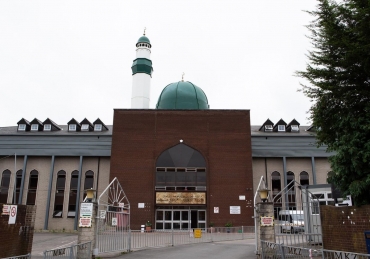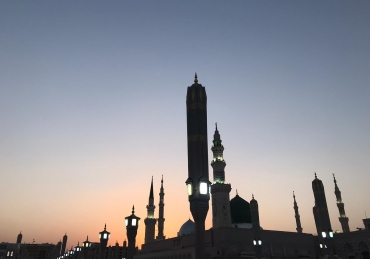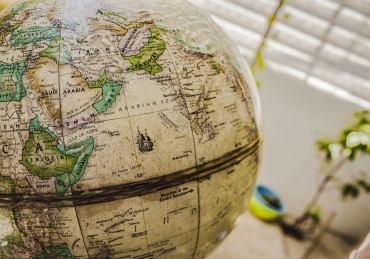Obituary: Ḥaḍrat Mawlānā Yusuf Motala Ṣāḥib (1366/1946 – 1441/2019)
بسم الله الرحمن الرحیم
It is with great sadness and sorrow that we received the news of the demise of our respected teacher, the leading British scholar, Ḥaḍrat Mawlānā Yusuf Motala Ṣāḥib Raḥimahullāh in Toronto, Canada this morning at 1.20am British Time, 8.20pm Canada time. This is a great loss. Ḥaḍrat was among the leading scholars of the UK whose contribution and efforts have had a profound impact on communities not just in the UK, but in many countries across the world. I have often heard my respected father Mufti Shabbīr Aḥmad (b. 1376/1957), who knew Ḥaḍrat since 1969, comment that British Muslims are particularly indebted to two individuals whose efforts played a significant role in the preservation of our faith and the spreading of Islamic knowledge: Ḥaḍrat Mawlānā Yusuf Motala Ṣāḥib and Ḥāfiẓ Patel Ṣāḥib (d. 1437/2016). Recently, Ḥaḍrat was included in the list of 500 most influential Muslims in the world. I thus thought it beneficial to pen a short obituary on the life of Ḥaḍrat to provide our readers a glimpse into the life of this great personality. Undoubtedly, much more comprehensive obituaries and articles will be written by Ḥaḍrat’s family members and senior students in the forthcoming days.
Birth and early life
Ḥaḍrat Mawlānā Abū Sulaymān Yusuf ibn Sulayman ibn Qasim Motala was born on Monday 1 Muḥarram 1366 Hijrī, 25 November 1946, in his maternal grandfather’s home in Nani Naroli, Gujarat, India. His mother Aminah bint Muhammad ibn Ismail Desai hailed from a pious family, her father’s residence was frequented by scholars and saints. Following the demise of Ḥaḍrat’s father’s first wife, his father married Aminah and several years later Ḥaḍrat’s elder brother Mawlānā ʿAbd al-Raḥīm Motala Ṣāḥib (d. 1434/2012) was born. Ḥaḍrat was born thereafter. His father’s ancestral village is Varethi, 10km from Nani Naroli.
Ḥaḍrat’s father Sulayman had a spiritual connection with Mawlānā ʿAbd al-Gafūr Bengālī Muhājir Makkī. He engaged in the constant remembrance of Allah and this started to create jadhb (spiritual absorption) within him. Eventually, he decided to remain absorbed and intoxicated in Allah’s love and becomes oblivious of the world. He requested his wife Aminah to return to her parents’ home. A few days later, Ḥaḍrat was born in his maternal grandfather’s house. Ḥaḍrat’s mother re-married some eight years later and moved to South Africa, whilst Ḥaḍrat remained in the care of his maternal grandparents. Following their demise, his maternal aunt looked after him. It was here in Nani Naroli at Madrasah Taʿlīm al-Quran that he acquired his primary Islamic education and memorised the Quran.
Jamia Husayniyyah, Rander
In 1961 (1380 hijrī), Ḥaḍrat enrolled at the famous seminary in Gujarat, Jamia Husayniyyah, Rander, where he studied the ʿĀlim programme for the next five years. It was during this period that for the first time Ḥaḍrat had sight of Shaykh al-Ḥadīth Mawlānā Muḥammad Zakariyyā Kāndhelwī (d. 1402/1982) at Surat Train Station, with whom he would later develop a very close relationship. Shaykh al-Ḥadīth Mawlānā Muḥammad Zakariyyā Kāndhelwī was on route to Hajj and stopped at the station for fifteen minutes.
Mazahir Uloom, Saharanpur
In 1966 (1385 hijrī), Ḥaḍrat decided to enrol at Mazahir Uloom in Saharanpur to complete the final two years of the ʿĀlim programme and benefit from the company of Shaykh al-Ḥadīth Mawlānā Muḥammad Zakariyyā Kāndhelwī. For the next two years, Ḥaḍrat studied under various teachers outlined below and developed a strong bond with Shaykh al-Ḥadīth Mawlānā Muḥammad Zakariyyā Kāndhelwī. Such was the relationship that Shaykh al-Ḥadīth Mawlānā Muḥammad Zakariyyā Kāndhelwī decided to postpone handing over the responsibility of teaching Ṣaḥīḥ al-Bukhārī to his successor for a year, enabling Ḥaḍrat to study the Ṣaḥīḥ with him. Ḥaḍrat was among the youngest students and associates of Shaykh al-Ḥadīth Mawlānā Muḥammad Zakariyyā Kāndhelwī and their relationship began towards the end of his life. Despite this, a strong bond was developed early on as reflected in this decision to postpone rescinding responsibility to teach the Ṣaḥīḥ. Ḥaḍrat is also a disciple of Shaykh al-Ḥadīth Mawlānā Muḥammad Zakariyyā Kāndhelwī and was given ijāzah in taṣawwuf. He also served as his Imam and was known in Saharanpur as “Qārī Yusuf”.
Along with Shaykh al-Ḥadīth Mawlānā Muḥammad Zakariyyā, Ḥaḍrat’s second role model was Shaykh al-Islam Mawlānā Ḥusayn Aḥmad Madanī (d. 1377/1957) although he only met him once as a young child (see discourses section below). Ḥaḍrat was influenced by these two personalities the most. Whenever Mawlānā Ḥusayn Aḥmad Madanī’s son, Mawlānā Asʿad Madanī (d. 1427/2006) would visit the UK, Ḥaḍrat would host him, and following his demise a programme was organised at Darul Uloom Bury reflecting on his life and works.
Teachers
I am not aware of Ḥaḍrat’s teachers in Jamia Husayniyyah, Rander with the exception of Mawlānā Shamsuddīn Afghānī Ṣāḥib (basā), whose style and anecdotes Ḥaḍrat would fondly recollect in our classes. Mawlānā Shamsuddīn Ṣāḥib is the author of an Arabic commentary of Sharḥ al-ʿAqāʾid al-Nasafiyyah, wherein he is extremely critical of Ḥāfiẓ Ibn al-Qayyim (d. 751/1350), describing him as deviant. Mawlānā Manẓūr Aḥmad Nuʿmānī (d. 1417/1997) refuted him in this regard in his al-Furqān magazine, a copy of which I possess. Mawlānā Shamsuddīn Ṣāḥib also authored an Arabic commentary of Sunan al-Tirmidhī, a partial manuscript exists in the library of my respected father Mufti Shabbīr Aḥmad (b. 1376/1957). I have benefited from this work and cited it in some of my Fatwas and books.
In Mazahir Uloom, Saharanpur, Ḥaḍrat studied under the following teachers:
- Shaykh al-Ḥadīth Mawlānā Muḥammad Zakariyyā Kāndhelwī (d. 1402/1982) taught him Ṣaḥīḥ al-Bukhārī in the final year.
- Mawlānā Asʿadullāh Rāmpūrī (d. 1399/1979) taught him Sharḥ Maʿānī al-Āthār in the final year. Mawlānā Asʿadullāh was a very intelligent and pious scholar. Our respected teacher Mawlānā Muḥammad Yūnus Jownpūrī would regularly praise him and recollect his piety and discourses. He was a senior disciple of Mawlānā Ashraf ʿAlī Thānawī (d. 1362/1943) and taught in Mazahir Uloom for approximately 60 years (for his biography, refer to al-Yawāqīt al-Gāliyah, 2:39).
- Mufti Muẓaffar Ḥusayn (d. 1424/2003) taught him Ṣaḥīḥ Muslim & Sunan al-Tirmidhī in the final year. (Ḥaḍrat’s classmate Mawlānā ʿAbd al-Qādir Patnī has confirmed this).
- Shaykh al-Ḥadīth Mawlānā Muḥammad Yūnus Jownpūrī (d. 1438/2017) taught him Mishkāt al-Maṣābīḥ in the penultimate year, and Sunan al-Nasāʾī, Sunan Abī Dāwūd and both Muwaṭṭaʾ in the final year.
- Mufti Yaḥyā Ṣāḥib (d. 1417/1996) taught him the third volume of Hidāyah in the penultimate year. He is the father of the current rector of Mazahir Uloom, Mawlānā Salman Ṣāḥib and served as the Head Mufti in Saharanpur for many years.
- Mawlānā ʿĀqil Ṣāḥib, the current Shaykh al-Ḥadīth of Mazahir Uloom taught him Tafsīr al-Jalālayn in the penultimate year.
Migration to the UK
After graduating in 1968 (1387), Ḥaḍrat travelled to the UK in June 1968 for marriage. Ḥaḍrat’s father in law the late Ḥājī Yaʿqub Sulaiman Limbādā of London sent the necessary paperwork for Ḥaḍrat’s visa and provided immense support on his arrival. Thereafter, for the next few years, Ḥaḍrat settled in Bolton and was appointed Imam of Zakariyya Jame Masjid. Ḥaḍrat would fondly share with us his recollections from this initial period wherein much sacrifices were given by our elders, the fruits of which we are reaping today.
A few months later in October 1968 (1388 hijrī), Ḥaḍrat joined a Tablighi Jamat convoy that was travelling to India to partake in an ijtimāʿ with a view of spending Ramaḍān in the company of Shaykh al-Ḥadīth Mawlānā Muḥammad Zakariyyā Kāndhelwī. It was during this journey by road that an accident occurred in Iran, two people passed away and the others were injured. Ḥaḍrat also sustained an injury on his arms. A detailed account of this trip and the accident was recently published by a family member of Haji Ibrahim Isa, a co-traveller of Ḥaḍrat (This can be downloaded from this link).
Establishment of the 1st Islamic Seminary (Darul Uloom) in the UK
In 1973, Ḥaḍrat decided to purchase a hospital in Holcombe Hall, Ramsbottom, Bury to establish UK’s first Darul Uloom and Islamic seminary. The purchase was finalised with the advice and blessings of Shaykh al-Ḥadīth Mawlānā Muḥammad Zakariyyā Kāndhelwī. Several years later in 1979 and 1981, he made two visits to this Darul Uloom. He had a lot of worry and concern for the Darul Uloom as evident from his published letters and also his two visits shortly before his demise despite his ill health and elderly age.
The Darul Uloom began with a few students. Among them was my respected father who studied here for a few years, studying most of his books one to one with Ḥaḍrat, Mawlānā Hāshim Ṣāḥib and Qārī Ismāʿīl Samnī, and thereafter travelled to Saharanpur in India for the final two years of the ʿĀlim programme and Iftāʾ.
Initially, the Darul Uloom was named Darul Uloom Khaliliyyah Rashidiyyah, this was subsequently changed to Darul Uloom al-Arabiyyah al-Islamiyyah, and it is now more commonly known as Darul Uloom Bury. The beginnings of the project were humble. However, the first graduates of Darul Uloom Bury graduated in 1981 (1401 hijrī) and ever since the seminary has continued to produce graduates. This humble writer is also fortunate to have graduated from this institute in 2005.
Students
Most scholars in the UK are direct or indirect students of Ḥaḍrat. Many students of Ḥaḍrat have established seminaries whilst many others are working in a range of fields including: Medicine, Accountancy, Chaplaincy, Charity, and other fields. Ḥaḍrat’s students reflect his legacy and contribution.
Some of Ḥaḍrat’s notable students include:
- My respected father Mufti Shabbīr Aḥmad, Ḥadīth Lecturer at Darul Uloom Blackburn. He studied many books of the first few years of the ʿĀlim programme with Ḥaḍrat, most of them on a 1-1 basis. My father migrated to the UK from Malawi in 1969, he knew Ḥaḍrat since, first as a student and thereafter as a co-teacher and Head Mufti at Darul Uloom Bury for thirty-five years and also Principal for most of this period.
- My respected teacher Mawlānā Bilāl Bāwā, who studied for several months in 1977 at Darul Uloom Bury before travelling to Saharanpur to complete his studies.
- His brother Mawlānā Iqbāl Rangūnī of Manchester, the author of many books, did the same.
- My respected teacher Mufti Muḥammad Ṭāhir Wādī, Ḥadīth Lecturer and Head Mufti of Darul Uloom Bury.
- Mufti ʿAbd al-Ṣamad Aḥmad, the Principal of Darul Uloom Blackburn.
- Mawlānā Faḍl al-Ḥaq Wādī, the Principal of Jāmiʿah al-Kawthar, Lancaster.
- Mawlānā Salīm Dhorāt, founder of Islamic Dawah Academy, Leicester.
- My respected teacher Mawlānā Nawshād ʿAbd al-ʿAzīz, Ḥadīth Lecturer at Darul Uloom Bury.
- My respected teacher Mawlānā ʿAbd al-Raḥīm Limbādā, the UK based Ḥadīth lecturer and founder of Raheemi Academy.
- My respected teacher Mawlānā Ḥifẓurraḥmān, the second father in law of Ḥaḍrat.
- My respected teacher Mufti Ibrāhīm Rājā, Ḥadīth Lecturer at Darul Uloom Bury.
- The late Mawlānā Muḥammad Dīdāt (d. 1439/2018), the former Librarian of Darul Uloom Bury.
- Dr Mawlānā Mahmood Chandia, Senior Lecturer at the University of Central Lancashire.
- Dr Mawlānā Mohammed Ashraf Makadam, Vice Principal of Madani School, Leicester.
- Dr Mufti Abdurraḥmān Mangera, founder of White Thread Institute, London.
- Dr Mawlānā Muḥammad Manṣūr ʿAlī, Lecturer at Cardiff University
- Mufti Shāh Ṣadruddīn, founder of Imam Zakariya Academy, London.
- Mawlānā Muḥammad Sīdāt, founder of the global NGO Ummah Welfare Trust.
- Mawlānā Khalīl Aḥmad Kazi, founder of Madina Academy, Dewsbury.
- Mufti Saiful Islām, founder of Jamiah Khatamun Nabiyeen, Bradford.
- Shaykh Riyāḍ al-Ḥaq, founder of Al-Kawthar Academy, Leicester.
- Shaykh Aḥmad ʿAlī, founder of Al Mahadul Islami, Bradford.
- Shaykh Yūnus Dudhwālā, Chairman of Halal Monitoring Committee UK and Head of Chaplaincy and Bereavement Support Services, Barts Health NHS Trust, London.
- Shaykh Ibrāhīm Mogrā, Assistant Secretary General of the Muslim Council of Britain.
- Shaykh Rafīq Ṣūfī, Trustee of Muslim Welfare Institute (MWI) and Chairman of Lancashire Council of Mosques.
- Mufti Mohammed Tosir Miah, Director of Darul Ilm, Birmingham.
- Mawlānā Maksūd Gangāt, Director of Al Risalah Trust, London.
- Mawlānā Ibrāhīm Moḥammed Amīn, Imam of Oxford Centre for Islamic Studies.
- Shaykh Shabbīr Menk, Harare, Zimbabwe.
- Shaykh Ibrāhīm Memon Madani, Canada.
- Dr Mawlānā Omair Malik, Saudi Arabia
- Mawlānā Shirāz ʿAlī, Trinidad.
- Mufti Ḥussain Kamānī, Dallas, Texas, USA.
- Mawlānā Rashīd Dāwūd, Lisbon, Portugal.
- Mawlānā Sarfarāz ʿĀlī, Auckland, New Zealand.
Since its inception, over a thousand students have graduated as scholars from Darul Uloom Bury and many more as Ḥuffāẓ. The vast majority of the graduates are proficient in English along with other languages. Ḥaḍrat encouraged students to pursue further education both in Islamic studies and other disciplines. Thus, some graduates travelled to India, Saudi Arabia and Egypt whilst others were encouraged to enrol at universities in the UK. This has resulted in a diverse range of graduates with expertise in different disciplines who are now contributing to and benefiting the Muslim community and the wider community in the UK and beyond.
As the first Darul Uloom in the Western World, the seminary attracted students from different parts of the world. Darul Uloom’s graduates include scholars from the following countries:
- Barbados
- Canada
- France
- India
- Morocco
- Netherlands
- New Zealand
- Panama
- Portugal
- Reunion
- Saudi Arabia
- Trinidad
- United Kingdom
- United States of America
- Zambia
- Zimbabwe
Teaching
Ḥaḍrat taught at Darul Uloom Bury since its inception in 1973. In the early years, there were only a few teachers and Ḥaḍrat taught many books. The first graduates of Darul Uloom Bury graduated in 1981 (1401 hijrī). For approximately eleven years during the 80s, Ḥaḍrat taught Sunan al-Tirmidhī along with other books. During this period, my respected father Mufti Shabbīr Aḥmad taught Ṣaḥīḥ Muslim. In the early 90s, they switched with each other. Subsequently, in 1416 (1996) after the demise of Shaykh al-Ḥadīth Mawlānā Islām al-Ḥaq, Ḥaḍrat started teaching Ṣaḥīḥ al-Bukhārī and continued doing so until his demise. For several years in the middle including in 2004-5 when we studied with Ḥaḍrat, Ḥaḍrat only taught a portion of the Ṣaḥīḥ. However, I understand in recent years, the full Ṣaḥīḥ would be read in his presence. Ḥaḍrat also taught the translation of the Quran for many years. My colleague Mawlānā Ḥassān Qāzī of Preston recorded our lessons and eventually this resulted in the publication of Ḥaḍrat’s Urdu translation of the Quran.
In addition to this, Ḥaḍrat served as a spiritual guide for many thousands of people. For many decades, the Thursday evening (Friday night) spiritual majlis would attract several hundred people at Darul Uloom in Bury. Ḥaḍrat was very punctual on attending this majlis throughout his life.
Other seminaries
Along with Darul Uloom Bury, Ḥaḍrat established several institutes. The list is as follows:
- Darul Uloom al-Arabiyyah al-Islamiyyah, Bury (Boys Boarding)
- Madinatul Uloom al Islamiya, Kidderminster (Boys Boarding)
- Jamiatul Imam Muhammad Zakariya, Bradford (Girls Boarding)
- Markaz ul-Uloom, Blackburn (Boys Boarding and Girls daytime)
- Madrasa al-Imam Muhammad Zakariya, Bolton (Girls daytime)
- Imam Muhammad Zakariya School, Preston (Primary school)
- Madrasa Imam Muhammad Zakariya, Preston (Girls daytime)
- Azhar Academy, London (Girls school and daytime madrasah)
- Al Markazul Ilmi, Dewsbury, (Girls daytime)
- Mahad al-Shuhada Mosque and Madrasa, Preston (Girls daytime)
- Imam Muhammad Zakariya Masjid and Maktab, Dundee
Many other seminaries and institutes were established with Ḥaḍrat’s blessings and guidance.
Publications
Ḥaḍrat authored several works during his life, which include the following:
- Iṭāʿat Rasūl (Urdu) – one volume.
- Mashāyikh Ahmedabad (Urdu) – two volumes.
- Translation of the Quran (Urdu) entitled Aḍwāʾ al-Bayān fī Tarjumat al-Quran – one volume.
- Tafsīr of the Quran (Arabic) – This is partially printed and was the work Ḥaḍrat had been working on over the past few years until his demise.
- Maḥabbat Nāmey (Urdu) – Letters of Shaykh al-Ḥadīth Mawlānā Muḥammad Zakariyya to Ḥaḍrat, printed in three volumes.
- ʿInāyat Nāmey (Urdu) – Letters of other scholars and luminaries to Ḥaḍrat, printed in one volume.
- Meyrey Bhai Jān Shaykh al-Ḥadīth Ḥaḍrat Mawlānā ʿAbd al-Raḥīm Ṣāḥib Nawwar Allah Marqadah (Urdu) – one volume.
- Jāmiʿ al-Siyar (Urdu) – one volume.
- Jamāl Muḥammadī Dars Bukhārī key Āiney mey (Urdu) – three volumes.
- Jamāl Muḥammadī kī Jalwah Gāhey (Urdu) – two volumes.
- Jamāl Muḥammadī Jabal Nūr par (Urdu) – one volume.
- Buzurgow key Wiṣāl key Aḥwāl (Urdu) – one volume.
- Shām wa Hind key Awliyā ʿIẓām (Urdu) – one volume.
- Aimmah Arbaʿah awr Ṣūfiyā Kirām (Urdu) – one volume.
- Karāmāt wa Kamālāt Awliyā (Urdu) – two volumes.
- Ḥaḍrat Shaykh al-Ḥadīth Mawlānā Muḥammad Zakariyyā Muhājir Madnī awr unkey Khulafāʾ Kirām (Urdu) – Three volume publication compiled by Mawlāna Yūsuf Ludyānwī and Ḥaḍrat.
- Makātīb Shaykh al-Ḥadīth Quṭb al-Aqṭāb Ḥaḍrat Mawlānā Muḥammad Zakariyyā Muhājir Madnī (Urdu) – one volume.
- Isnād Bukhārī Sharīf (Urdu) – A small booklet, with a foreword by Shaykh Muḥammad Yūnus Jownpūrī.
- Nūr Nubuwwat (Urdu) – a one volume book.
- Ṣalāt wa Salām ʿalā Sayyid al-Anām bi al-Asmāʾ al-Ilāhiyyah wa al-Alqāb al-Nabawiyyah (Arabic) – a small booklet.
- Maṣābīḥ al-Dujā (Arabic) – a small booklet.
- Maṣābīḥ al-Sabīl (Arabic) – a small booklet.
- Miṣbāḥ al-Ẓalām (Arabic) – a small booklet.
- Makātīb Yūsufī (Urdu) – a one volume book featuring the letters of Ḥaḍrat to Mawlāna Aḥmad ʿAlī Lūnat of Leicester.
- Al-Adʿiyah al-Qurāniyyah (Arabic) – a small booklet.
- Sarkār Dow ʿĀlam Ṣallallāhū ʿalayhi wa Sallam awr Māhey Ramaḍān (Urdu)
- Maqālat Yūsufī (Urdu) – an unpublished work of my colleague Shaykh Khalīl Aḥmad Kāzī featuring Ḥaḍrat’s articles and speeches, preceded with a biography in Urdu entitled Dhikr Yūsufī. This will be published on this website soon.
Many of the PDFs are available on the Inter Islam website and several publications have also been translated into English. The small booklets have also been published as a collection entitled Hadyah Ḥaramayn.
Travels
After migrating to the UK, Ḥaḍrat’s travels were centred around his mentor and teacher Shaykh al-Ḥadīth Mawlānā Muḥammad Zakariyyā Kāndhelwī. Thus, he travelled by road to India as mentioned above, and he also travelled to Pakistan and Saudi Arabia to remain in the company of his mentor.
After Shaykh al-Ḥadīth Mawlānā Muḥammad Zakariyyā Kāndhelwī’s demise, Ḥaḍrat would travel to South Africa to meet his mother. In 1996-97, he stayed for a prolonged period and also taught lessons there. He would also travel regularly to Saudi Arabia particularly in the month of Ramaḍān. In al-Masjid al-Nabawī, students and teachers of Darul Uloom Bury would perform Iʿtikāf. I also recall participating once or twice as a young child in the 90s. Until recently, Ḥaḍrat also had a permanent residence in the blessed city, reflecting his attachment with the city and love for our beloved Prophet ﷺ.
In addition, Ḥaḍrat would be invited from different countries for programmes. According to my knowledge, the countries Ḥaḍrat visited include (this does not include all the countries visited during the road journey to India):
- Barbados
- Canada
- Egypt
- India
- Lebanon
- Malawi
- Morocco
- Pakistan
- Portugal
- Reunion
- Saudi Arabia
- South Africa
- Turkey
- Zambia
Some discourses
This writer studied the translation of a part of the Quran and a part of Ṣaḥīḥ al-Bukhārī with Ḥaḍrat. During the Ṣaḥīḥ al-Bukhārī lessons, I made some notes. A translation of some of these are presented here along with some other recollections. Ḥaḍrat would also share dreams and their interpretations in our lessons, he was an expert on interpreting dreams.
- Ḥaḍrat said on Tuesday 23 November 2004, “Recite the Quran in Nafl prayers in abundance. This is more beneficial to remember the Quran than revision (dawr).”
- Ḥaḍrat said on Tuesday 23 November 2004, “Make the students punctual on Ṣalāh and be stringent in this regard, even if someone is offended by this. This is because Ṣalāh stops many evils as mentioned in the Quran. Ṣalāh is such an important obligation, yet it is (relatively) easy.”
- Ḥaḍrat said on Monday 29 November 2004, “Ḥaḍrat Shaykh (Mawlānā Muḥammad Zakariyyā) would recite the Quran after ʿAṣr Ṣalāh to Mufti Yaḥyā and Ḥakīm Ilyās. He would cry so much that the onlooker would feel sorry.”
- Ḥaḍrat said on Monday 6 December 2004, “Ḥaḍrat Shaykh (Mawlānā Muḥammad Zakariyyā) began writing Awjaz al-Masālik in the blessed city of Madīnah and wrote one volume (equivalent to three volumes of the new print) in three and a half months. The rest of the volumes took many years.”
- Ḥaḍrat agreed with the view of Mawlānā Ḥusayn Aḥmad Madnī (d. 1377/1957) in relation to the partition of India. He said on Wednesday 8 December 2004, “I have most admiration for Shaykh al-Islam Ḥaḍrat Madanī.” He said two days later on Friday 10 December 2004, “In 1956, he visited Gujarat for a convention of Jamiat, in which Nehru also participated. Ḥaḍrat Madanī performed ʿAṣr Ṣalāh in our Masjid in Naroli. I was nine or ten years old. After Ṣalāh, people were shaking hands with him and we young children did muṣafaḥah a few times.”
- Ḥaḍrat said on Saturday 1 January 2005, “Ḥaḍrat Shaykh (Mawlānā Muḥammad Zakariyyā) wrote to all the seminaries in the Indian sub-continent including the Ahl Ḥadīth ones asking for their asānīd (ḥadīth chains). All the responses featured Shāh Waliyyullāh in their chains. This is why he is Musnid al-Hind.”
- Ḥaḍrat said on Saturday 1 January 2005, “Shāh Waliyyullāh and his descendants did a lot of work. The Ummah is indebted to them.”
- Ḥaḍrat said on Friday 7 January 2005, “Work with and among the Barelwis, do not debate with them.”
- Ḥaḍrat said on Thursday 27 January 2005, “Shariah demands that Allah is remembered at all times and not only remembered, but embedded in the heart.”
- Ḥaḍrat said on Friday 28 January 2005, “Shaykh ʿAbd al-Aziz ibn Bāz was a very good person notwithstanding some of his views. He would respect Mawlānā Saʿīd Aḥmad Khan Ṣāḥib.”
- Ḥaḍrat said on Saturday 29 January 2005, “Once Mawlānā ʿAlī Miyā Nadwī (Sayyid Abu al-Ḥasan) visited Ḥaḍrat Shaykh (Mawlānā Muḥammad Zakariyyā) and was amazed at the number of letters Ḥaḍrat Shaykh would receive and respond to. He requested a count. On that day, 65 letters were received and responded to in addition to all the other commitments of Ḥaḍrat Shaykh.”
- Ḥaḍrat said on Wednesday 1 June 2005, “To ascertain the mindset of an author is easy, look at what they have written on the sensitive topics.”
- Ḥaḍrat said in 2005, “Whatever errors the companions made, it is not permissible for any of us to open his tongue in this regard.”
- Ḥaḍrat gave me a tip in 2005 regarding the swift but clear recitation of the matn (text) of Ṣaḥīḥ al-Bukhārī and other books. He advised to read two lines in one breath.
- I observed Ḥaḍrat on many occasions when drinking soup or eating dessert with a spoon, he would upon completion wipe the bowl with his fingers and lick them to avoid wasting even a small amount.
Personal recollections
I cannot remember the first time I saw or met Ḥaḍrat. During my birth at home, Ḥaḍrat was anxious and continued to supplicate due to the complications. As a student at Darul Uloom Bury, Ḥaḍrat was very affectionate towards me due to my young age. I recall once when I was 12 or 13, he called me to the balcony and enquired regarding the disciplinary tactics of a particular member of staff. A year before this in 2001, I was hospitalised following a car accident on the way to Darul Uloom. Ḥaḍrat visited me at the hospital, fed me soup with his own hands, and after being discharged, checked my head physically to ascertain if the wound had healed.
In 2003, I was fortunate to lead the complete Tarāwīḥ Ṣalāh at Darul Uloom Bury during the second half of Ramaḍān. Ḥaḍrat decided to travel to Saudi Arabia. He was questioned and detained at the Airport for seven hours. This created a national uproar. Ḥaḍrat returned from London to Darul Uloom Bury. As a young boy, after Tarāwīḥ Ṣalāh, I was walking outside and I recall Dr Ashraf Makadam driving Ḥaḍrat into the gates. There was no one else present. Ḥaḍrat opened the window and called me, I do not recall what he said or asked me to do.
During that Ramaḍān on the 21st night, my respected father requested Ḥaḍrat to deliver advice every day after Tarāwiḥ Ṣalāh. This was the beginning of Ḥaḍrat’s Ramaḍān programmes in the month of Ramaḍān which continued until his demise. During the final ten days, Ḥaḍrat had asked me to collect tea from his house every day before Maghrib Ṣalāh for Mawlānā Maksūd Gangāt and Sultan Bhai. On the final day when the Quran was being completed, he gifted me a brown bandī (jacket). The feeling is overwhelming when a teacher gifts something to a student.
More recently, when my young son Muḥammad was born in 2014, and I brought him to Darul Uloom Blackburn to Shaykh al-Ḥadīth Mawlānā Muḥammad Yūnus Jownpūrī. Ḥaḍrat came to visit Shaykh. Ḥaḍrat asked me, “Who is this?” I said, “My Muḥammad.” Ḥaḍrat asked, “You did not inform me.” I said, “Ḥaḍrat, I sent ʿAqīqah food to you.” Ḥaḍrat had performed my Nikāḥ in Darul Uloom Bury in December 2012. As I walked outside with Muḥammad to the car, Ḥaḍrat sent my cousin Mawlānā Yaḥyā from the car and gifted £20.
Final meeting
My penultimate meeting with Ḥaḍrat was at the Stanley House Hotel in Blackburn on Monday 10 June 2019 at 6.45pm. Ḥaḍrat came to the hotel to visit our guest Shaykh al-Islam Mufti Muhammad Taqi Usmani (b.1362/1943). Ḥaḍrat gave me a gift to deliver to Mufti Ṣāḥib’s room.
Later in the evening, on behalf of my respected father, I invited Ḥaḍrat via text message to join us for lunch the following day with Mufti Muhammad Taqi Usmani, Mufti Saʿīd Pālanpūrī (b. 1362/1942) and Mufti Ahmad Khanpuri (b. 1365/1946) at my father’s residence. Ḥaḍrat replied immediately, “Bo Jazakallah hun parhez ne lay ne ghar thi bar khawa ma ihtiyat karun barakallah” (May Allah reward you in abundance, I am cautious regarding eating outside of my house due to some dietary restrictions, may Allah bless you).
My final meeting with Ḥaḍrat was at his former residence opposite Darul Uloom Bury on Friday 14 June 2019. Ḥaḍrat had invited Mufti Muḥammad Taqi Usmani to lead Jumuʿah Ṣalāh at Darul Uloom Bury and deliver a short ḥadīth lesson thereafter. Food was arranged thereafter at his former residence. We stood by the table and served whilst the two luminaries ate food and exchanged views. Mufti Ṣāḥib said, “I have come to hear from you the stories of Shaykh al-Ḥadīth Mawlānā Muḥammad Zakariyyā.” After Mufti Ṣāḥib left, we ate on the same table and Ḥaḍrat encouraged us to eat. This was the final meeting.
Demise
In August a few weeks ago, Ḥaḍrat travelled to Canada with his family to deliver some speeches. On Sunday 25 August in the morning, Ḥaḍrat suffered a heart attack which caused injury to the brain. The news spread worldwide. The heart procedure was successful, however, Ḥaḍrat remained unconscious. Medical efforts continued. Allah Almighty had decreed otherwise. Ḥaḍrat passed away at 8.20pm Canada time, on Sunday 8 September 2019, this corresponds to 9 Muḥarram 1441 hijrī in Canada. Accordingly, Ḥaḍrat’s age was 75 and 72 according to the Islamic and solar calendars respectively.
The Janāzah Ṣalāh was performed today after Ẓuhr Ṣalāh 1.35pm at Jame Masjid Mississauga (Coopers Avenue Mosque) in the outskirts of Toronto. Approximately, 3000 people performed Ṣalāh. Thereafter, Ḥaḍrat was buried in Glenview Memorial Gardens in the Paradise Garden section. The Janāzah Ṣalāh and the recital at the grave was led by Ḥaḍrat’s son in law Mawlānā Junaid Desai. Shaykh Aḥmad ʿAlī of Bradford delivered a speech before the Ṣalāh. Many scholars including my respected father Mufti Shabbīr Aḥmad and my respected teacher Mawlānā ʿAbd al-Raḥīm Limbādā participated in the Ṣalāh and burial.
It is worth noting that Monday night had begun when Ḥaḍrat passed away. Our beloved Prophet Muḥammad ﷺ also passed away on a Monday. Ḥaḍrat possessed immense love for the Prophet ﷺ. According to Imam Bukhārī (d. 256/870), the most virtuous day to pass away is Monday because the leader of mankind ﷺ passed away on that day (Ṣaḥīḥ al-Bukhārī, 1387).
Ḥaḍrat’s demise is a great loss for the Ummah as a whole and particularly for British Muslims. A great personality has left this world. We pray to Allah Almighty to forgive Ḥaḍrat and grant him an abode in Jannatul Firdaws. May Allah Almighty accept all his endeavours and make them a means of his salvation. May Allah Almighty protect all the institutes he established and bless them.
Ḥaḍrat leaves behind two spouses and eight children: Aishah Khala and her daughter Khadijah Apa who is married to Mawlānā Junaid Desai Ṣāḥib, they have five children: Muhammad, Ahmad, Humayd, Aishah and Humayrah. Ḥaḍrat has seven children from his second spouse Aishah Apa: Mawlānā Sulayman, Fatimah, Zaynab, Ruqayyah, Aminah, Qasim and the eldest Mawlānā Muhammad who married recently to my cousin and raḍāʿī (foster) sister Ḥasanah. May Allah Almighty shower mercy upon them all and grant them and all of Ḥaḍrat’s family, associates and students Ṣabr Jamīl. Āmīn.
Yusuf Shabbir
Graduate of Darul Uloom Bury (2005)
9 Muḥarram 1441 / 9 September 2019
Note: For a list of the Khulafa, visit the following link: https://islamicportal.co.uk/khulafa-of-hadrat-mawlana-yusuf-motala/.


